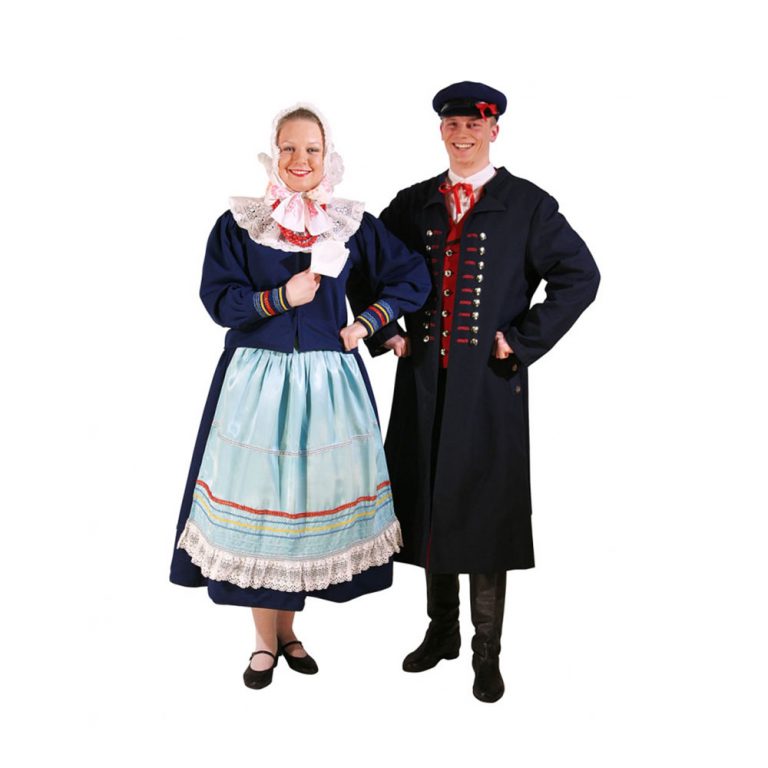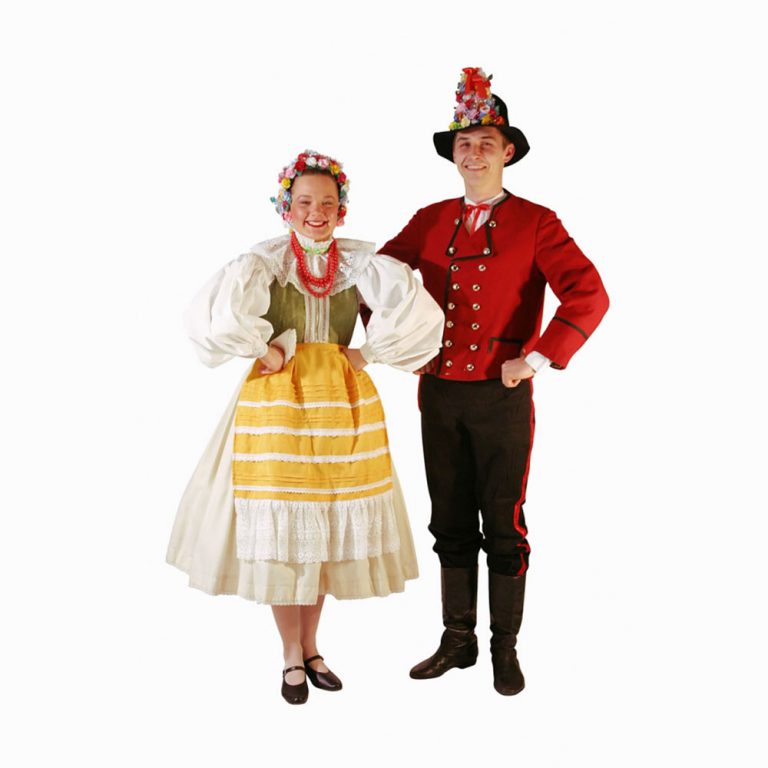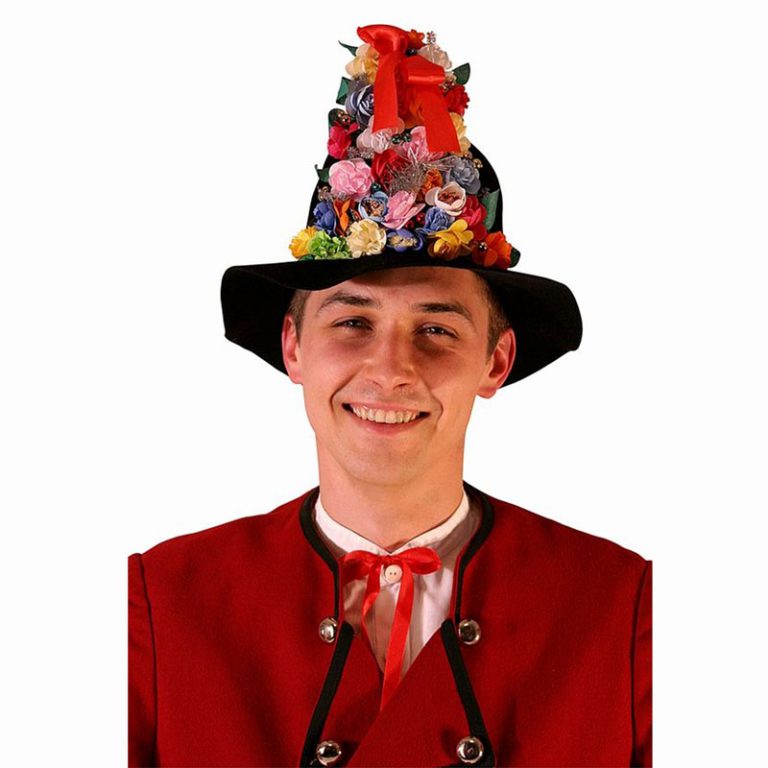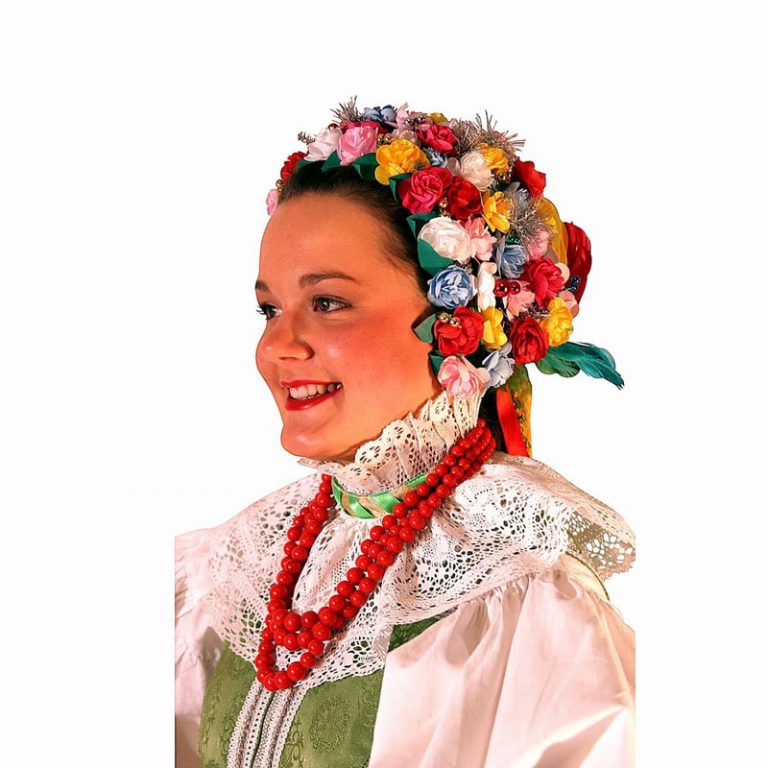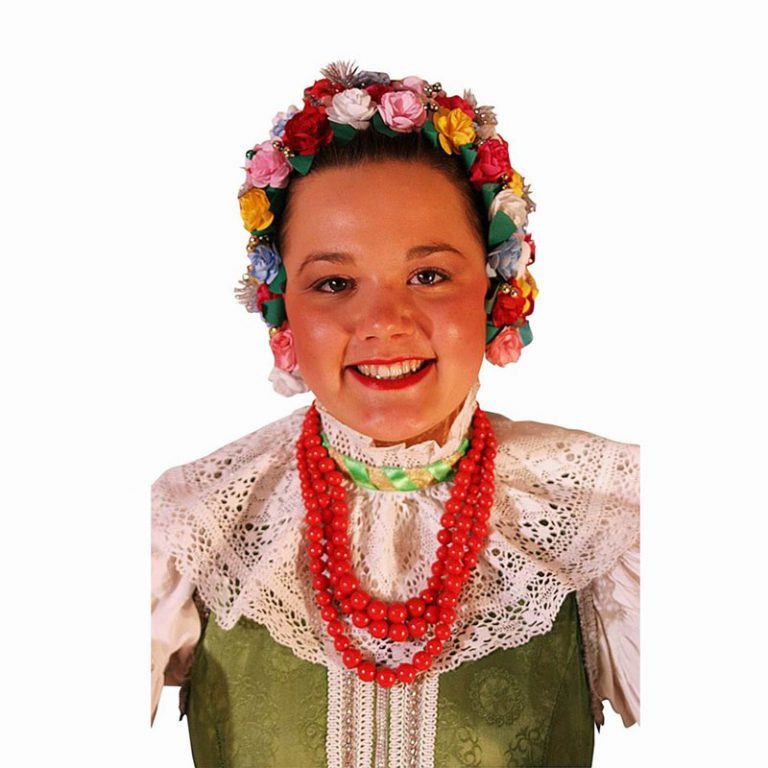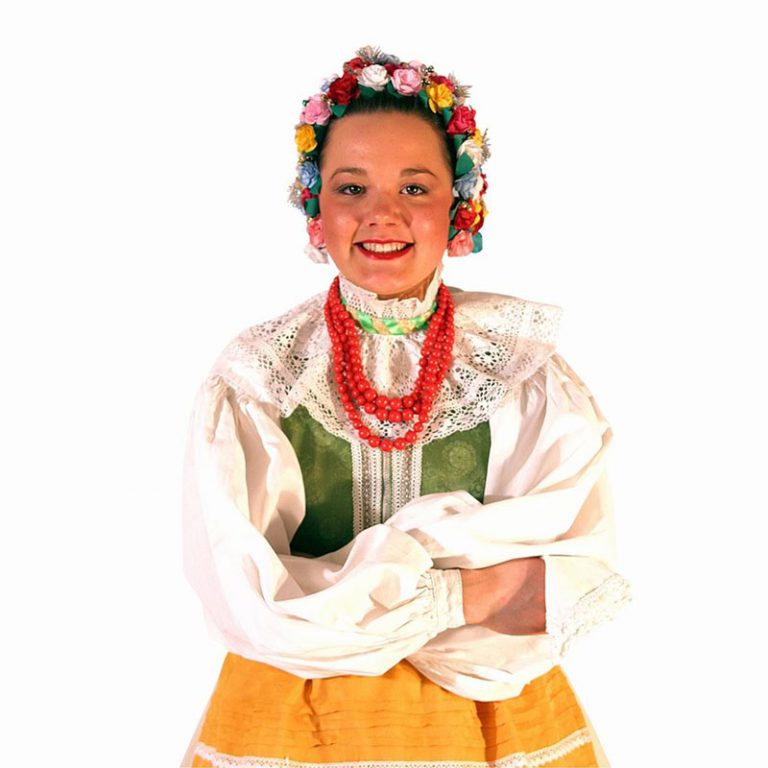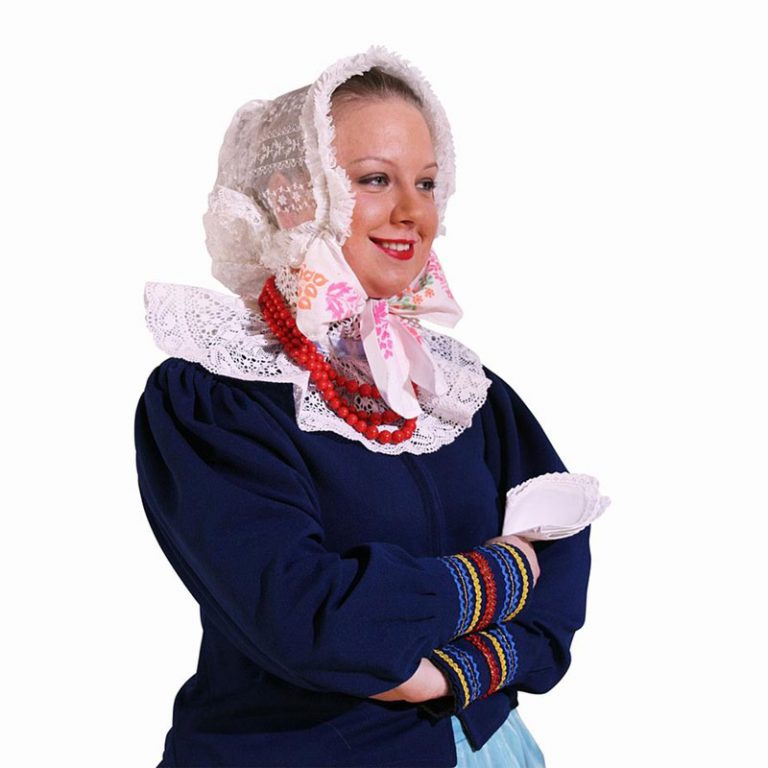Traditional costume from the Dąbrówka Wielkopolska region

The folk dress from Dąbrówka Wielkopolska was a traditional and very characteristic outfit worn in the second half of the 19th century and at beginning of the 20th century in Dąbrówka Wielkopolska and its surrounding villages. The are is currently within the administrative borders of the Lubuskie Voivodeship, but ethnographically it is on the frontier of Western Wielkopolska. When it comes to its geography, the area is located between the middle Oder river and the lower areas of the rivers Warta, Nysa Łużycka and Bóbr and forms a kind of a bridge connecting Wielkopolska and Brandenburg on the one hand and Western Pomerania and Silesia on the other.
Outfit of married woman
A festive outfit of a married woman consisted of a few elements. The underwear, the closest to the body, consisted of a bottom spódnik and a shirt. The spódnik was sewn from white linen, gathered in the belt at the back, and trimmed with machine made lace at the bottom. A shirt which was invisible from underneath was sewn mostly from three different kinds of cloth. The lower part made from thick linen linen cloth, the upper part from thinner linen cloth and long sleeves from the most delicate kind of linen. Besides the shirt with long sleeves, shirts with short sleeves that reached down to the elbow were also common. The only decorations of such shirts were creased sleeves and sometimes fine white embroidery on the shoulders. Another element of the festive outfit was an outer spódnik. A few kinds of skirts were popular in Dąbrówka Wielkopolska and its vicinity and they were called differently depending on the technique, the fabric and the design used. Thus, women wore the following garments: a szorc, a suknia, a watok, a spódnik and dera. A dera was the most frequent form of the spódnik worn by married women. An oplecek was another part of the women’s outfit. It was simply a corset also found in other region of Wielkopolska, worn either as a separate article of clothing or attached to the spódnik. Most often the oplecek was not visible because other parts of the outfit were put on top of it. Therefore, it could be made from any kind of material, not necessarily of the highest quality, Hence, it was sewn from cotton or semi-silk fabric in blue, bottle blue, celadon or purple. The only decorations of the oplecek were tapes, zigzag trimmings made from a string and narrow ribbons. These decorations were usually placed along the neckline and the fastening of the oplecek, which was a line of metal hooks and eyes in the front. At the beginning of the 20th century dresses became one more common variation of a festive outfit of the Dąbrówka Wielkopolska. In the period between the two world wars they became an outer ritual outfit which a woman wore for the first time at her wedding. Such dresses were traditionally sewn from one fabric- silk, brocade or rep – in one color : green, blue or maroon. The upper part of the dress resembled the oplecek to which sleeves were attached. The sleeves were richly gathered on the shoulders and the bottom edge was trimmed with a white lace, pink or green string or a colorful tape. The lower of the dress was a wide skirt with pleats stitched in at the back of the belt and on its sides. Both the upper and the lower parts formed a set which was fastened in the front with hooks and eyes. The lining of the dress was made from grey cloth and stiff gauze. An apron was the decoration of the outer spódnik. The festive outfit required an apron sewn from silk, damask, satin or batiste, usually in colors contrasting with the oplecek. Women put on a kryzik called also a kruza with all kinds of folk dress from Dąbrówka Wielkopolska. Women manifested a festive character of their outfit by putting on a necklace consisting of a few strings of red genuine coral beads. The women’s headgear was another characteristic element of this folk dress. A bonnet worn by housewives know as a kopka is both a typical and a very specific example. The bonnet consisted of a bottom and a ślorka, both created a tiny cap trimmed with a strap of rolled tulle around the edge surrounding the face. This part was called dutki. Besides them, the kopka also had an ogonek. It was a kind of decoration made of a stiff tulle frill, arranged in creases and decorated with the white embroidery. This kind of decoration was hanging at the back of the kopka. The ogonek on the bonnet of married woman was decorated with narrow pink or blue ribbons. Having put the bonnet on the head, women tied it under the chin. In the case of a married woman the bonnet was tied with ribbons which were painted or embroidered with different patterns, mostly with floral motifs.
Ritual outfit of a maid – bridesmaid
As usual, the bottom part of the outfit was the underwear. It consisted of white embroidered bottom petticoats and a shirt made of fine fabric with long sleeves, fastened I nthe front and decorated only with cuff gatherings. Then a white spódnik came, sometimes with subtle pattern. The oplecek, which was attached to the skirt, was mostly in deep colors: red green or blue. Additionally, the oplecek was serrated and decorated with patterned tapes. The outfit formed a set with apron, sewn from silk or satin, decorated with tucks and lace at the bottom. The color of an apron could not be accidentally chosen, it was chosen so asto contrast with the oplecek. The neck of a young girl, as in the case of other outfits, was decorated with double kryzik, made from embroidered tulle or linen also decorated with embroidery. Another characteristic, important and very picturesque element which decorated the head of bridesmaid was a wreath otherwise known as a bouquet. It was made of colorful artificial flowers tied together and stiffened with a wire, it was decorated with the szych, colorful glass valls and finished with multicolored feathers of a rooster on either side.
Outfit of a bachelor and a married man
The outfit of a young men consisted of black trousers with red stripe, shirt, red jaka, black shoes and a hat. A russet coat known as a sukmana was the outer garment of all men, both adult and young bachelors. Since 19th century they were sewn from black cloth but earlier russet coats made from worse quality materials e.g. cajg, and even from white linen, mainly dyed blue or green, were quite common. In its design the russet coat resembled a long coat reaching down to ankles. The festive outfit was worn with a peaked hat. It was called a maciejówka or poznanianka, because most often it was purchased in Poznań. Young bachelors wore a black hat with characteristic bouquet made of flowers.






